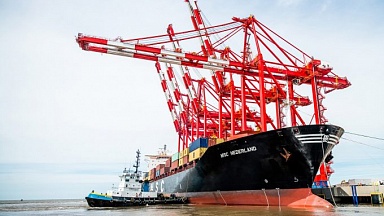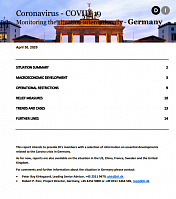The global economy experienced a further slowdown in 2023, confirming the trend seen since the second half of 2022, after a phase of strong recovery post-Covid that had started in the spring of 2021. The demand for goods has decreased, which has reduced the demand for transport and led to a decline in freight rates. The year 2023 confirmed the emergence of new patterns of globalisation, influenced by the multiplication of geopolitical crises.
1. Slow growth
According to the OECD’s Interim Economic Forecast published in November 2023, world gross domestic product is expected to grow by 2.9% for the whole of 2023. This figure reflects a slowdown compared to 2022, and erosion is expected to continue in 2024, with growth falling to +2.7%.
In 2023, the economy turned out to be rather stronger than expected at the beginning of the year, thanks to lower energy prices and the reopening of China. However, in the second part of the year, activity was penalised by the tightening of monetary policy aimed at fighting against inflation.
2. Inflation proved difficult to contain
The drastic policy of monetary tightening carried out by the central banks of the major economies has produced the desired effects.
In Europe, in its economic bulletin of October 2023, the ECB estimates that «rates are at levels that, maintained for a sufficiently long duration, will make a substantial contribution to the timely return of inflation to the target (of 2%).»
In China, the situation is radically different, with almost zero inflation and even deflation observed in July, October and especially in November. Nevertheless, this trend is just as worrying as the overheating observed in Western economies, as it reflects the difficulties facing the Chinese economy, despite the reopening of the country at the end of 2022.
3. High volatility in transport prices
Ocean Shipping Rates All modes of transport were affected. But it is in the maritime container shipping sector that price volatility is most dramatic. That being said, the sector is extremely susceptible to exogenous factors. In December, major shipping companies decided to avoid the Suez Canal and circumnavigate Africa by the Cape ofGood Hope, due to attacks in the Red Sea by Yemeni rebels, the Houthis. Freight rates are thus expected to rise again, at least temporarily and on certain routes such as Asia-Europe, despite the continuation of deliveries of new vessels in 2024.
Road Freight Rates Traditionally less volatile, road freight rates have however joined the general upward trend in 2021-2022 and the downward one in 2023. In this sector, the variation of rates is very closely correlated with that of fuel prices, due to the existence of pass-through mechanisms.
4. Global trade is facing difficulties
The growth of global merchandise trade is slowing down. The trade slowdown appears to be broad-based, involving a large number of countries and a wide array of goods, specifically certain categories of manufactures such as iron and steel, office and telecom equipment, textiles, and clothing. A notable exception is passenger vehicles, sales of which have surged in 2023.
The evolution of the trade balance between the three major world economies in the first 10 months of the year also illustrates the slowdown in trade. Both exports and imports decreased, including a double-digit decline in imports from China to the EU and the United States.
5. New geopolitical shocks
Start of the China-US trade war in 2018, Covid pandemic in 2020, Russia-Ukraine conflict in 2022, resurgence of the Israeli-Palestinian conflict in 2023: these crises with lasting consequences, that closely followed one another, have in common had a strong impact on the organisation of logistics chains, through their impact on costs, volumes, production patterns, etc.




